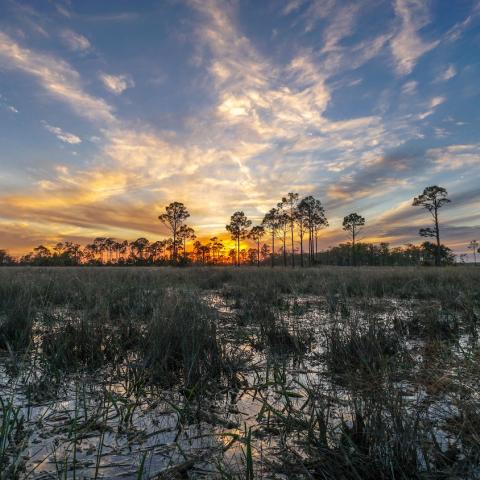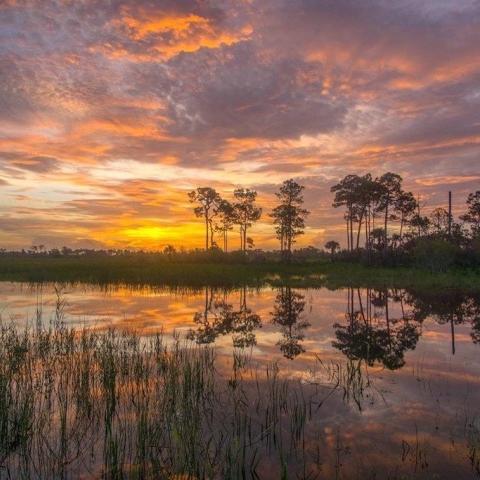
At least 900 Burmese pythons have been removed from the Everglades in South Florida, including this 18'-4" female from Big Cypress National Preserve/Florida Fish And Wildlife Commission
Editor's note: This updates to CORRECT that the 900 snakes were removed from throughout South Florida, not just Big Cypress National Preserve.
Officially, 900 Burmese pythons have been removed from the Everglades in South Florida since the effort to remove the invasive snakes began about a half-dozen years ago.
The big constrictors first were spotted in the Everglades back in 1979, and they've reproduced quickly in that habitat, which offers them plenty of food and shelter.
On September 24, a 2-foot, quarter-pound python was captured by Bobby Monroe, a member of the Florida Fish and Wildlife Conservation Commission's Python Action Team. It was recorded as the 900th python to be captured. Just two days earlier an 18-foot, 4-inch long female python was captured in Big Cypress National Preserve, according to the commission. The big snake weighed nearly 99 pounds.
"Capturing large adult females is critical because it prevents them from potentially adding an average of 30 to 60 hatchlings to the population each time they breed," the commission said in a release.
"Removing 900 pythons is a great milestone for our Python Action Team! These snakes, coupled with the thousands removed by our partners at the National Park Service and the South Florida Water Management District, make a significant impact to protect Florida’s native wildlife,” said FWC Executive Director Eric Sutton. “With leadership from Governor Ron DeSantis, we are committed to working with our partners, including the South Florida Water Management District and the National Park Service, to accomplish our goal of removing pythons from our beautiful state.”
Pedro Ramos, superintendent of Big Cypress, Everglades National Park, Biscayne National Park, and Dry Tortugas National Park, said no one agency alone can handle the task of removing the invasive snakes from South Florida.
"We're grateful to our partners from FWC and the South Florida Water Management District and look forward to continuing to work with them on Governor DeSantis' initiative to expand python removal," said Ramos.
The public can help the FWC control nonnative invasive wildlife by reporting sightings to the FWC’s Exotic Species Hotline at 888-IveGot1 (888-483-4681), online at IveGot1.org or by using the free smartphone app IVEGOT1. If possible, take a picture and note the exact location of the sighting. Python Action Team members often respond to reports of large constrictors and other priority species to attempt to capture and remove these animals from the wild.



 Support Essential Coverage of Essential Places
Support Essential Coverage of Essential Places







Comments
900 removed by the Python Action Team, not 900 out of BiCy :(
Bring back the wild Hogs and they will bring the snake population down. We will still have to hunt to get the big ones for a while until we whipe them out, the hogs will take care of the rest. The hogs killed and ate them snakes back in the days before they were eradicated from the Big Cypress. I was raised going out to the Big Cypress with my Daddy and friends to our camp down south in the Skillet Strand many years. It was called "the Big Cypress Swamp" way back then. Since the snakes took over we have hardly any small fur bearing critters from the marsh rabbits, opposums, raccoons, fox, otters, armadillos, bobcats and in between and that's very sad. Bring back the Wild Hogs and them snakes won't be able to get big any more.
My buddy and I are out in big cypress all the time. We're either hunting or scouting. What should we be looking for as far as habitat. While not really interested in hunting them, we will gladly remove any we come across. Hate to see one of my favorite areas impacted by these snakes!
I am all for it. Hell, I'll help trap and transport the hogs out there if it even has the slightest chance of working. I'm sure others will help too. Not to mention the smaller hogs will provide food for the panthers since the snakes have probably eaten half of the small game the panthers rely on for food.